This is a modest attempt to compile a selected bibliography on e-government with a view to share this resource with fellow e-government researchers. The bibliography is arranged thematically. It is proposed to update it from time to time.
October 18, 2008
New Delhi, India
Dr D.C.Misra
I. GLOBAL REPORTS ON OR RELEVANT TO E-GOVERNMENT
(a) International Organisations
ITU (International Telecommunication Union) (2006): World Telecommunication/ ICT Development Report 2006: Measuring ICT for Social and Economic Development, Geneva, Switzerland, Eighth Edition, Executive Summary, http://www.itu.int/dms_pub/itu-d/opb/ind/D-IND-WTDR-2006-SUM-PDF-E.pdf
ITU (International Telecommunication Union) (2005): The Internet of Things, Geneva, Switzerland, the Author, November, ITU Internet Reports 2005, Executive Summary,
http://topics.developmentgateway.org/egovernment/rc/ItemDetail.do~1066665?intcmp=700 (accessed: July 10, 2006)
UNCTAD (United Nations Conference on Trade and Development) (2005): Information Economy Report 2005: E-commerce and Development, New York and Geneva, the Author, http://www.unctad.org/en/docs/sdteecb20051_en.pdf
UNDESA (United Nations Department of Economic and Social Affairs) (2008): World Public Sector Report 2008: People Matter: Civic Engagement in Public Governance, New York, the Author, June, http://unpan1.un.org/intradoc/groups/public/documents/un/unpan028608.pdf
UNDESA (United Nations Department of Economic and Social Affairs) (2005a): World Public Sector Report 2005: Unlocking the Human Potential for Public Sector Performance, New York, the Author, October, http://unpan1.un.org/intradoc/groups/public/documents/un/unpan021616.pdf
UNDESA (United Nations Department of Economic and Social Affairs), Division for Public Administration and Development Management (2005b): Global E-Government Readiness Report 2005: From E-Government to E-Inclusion, New York, the Author, http://unpan1.un.org/intradoc/groups/public/documents/un/unpan021888.pdf
UNDESA (United Nations Department of Economic and Social Affairs) (2003): World Public Sector Report 2003: E-Government at the Crossroads, New York, the Author, October, unpan1.un.org/intradoc/groups/ public/documents/UN/UNPAN012733.pdf
UNESCO ORBICOM (2005): From the Digital Divide to Digital Opportunities: Measuring Infostate for Development, Montreal (Quebec), Canada, Orbicom International Secretariat, Université du Québec à Montréal, George Sciadas, Editor, http://www.orbicom.uqam.ca/projects/ddi2005/index_ict_opp.pdf
Orbicom, a specialized network of UNESCO with consultative status with UN-ECOSOC, is an International Network of UNESCO Chairs in Communications. It embodies 26 chairs in communication and over 250 associate members in 73 countries.
World Bank (2006): Information and Communications for Development 2006: Global Trends and Policies, Washington, D.C., the Author,
A new World Bank flagship publication addressing the critical role being played by information and communication technologies (ICT) in economic development. It provides a global overview of ICT trends and policies in developing countries, covering issues such as financing infrastructure, the importance of public-private partnerships and effective competition to extending access, using ICT in doing business and formulating national e-strategies.” The report also has “The ICT At-a-Glance tables for 144 economies,” which “show the most recent national data on key indicators of ICT development. The data enable assessment and comparison both over time and across economies to assess ICT capacity, performance, progress and opportunities.” Check the details at
http://web.worldbank.org/WBSITE/EXTERNAL/TOPICS/EXTINFORMATIONANDCOMMUNICATIONANDTECHNOLOGIES/0,,contentMDK:20831214~pagePK:210058~piPK:210062~theSitePK:282823,00.html (accessed: July 14, 2006)
(b) Universities
Holzer, Marc and Seang-Tae Kim( 2005): Digital Governance in Municipalities Worldwide: A Longitudinal Assessment of Municipal Websites Throughout the World, Newark , NJ, Rutgers, the State University of New Jersey, The E-Governance Institute, National Center for Public Productivity, and Global e-Policy e-Government Institute, Graduate School of Governance, Sungkyunkwan University, Co-Sponsored by Division for Public Administration and Development Management, Department of Economic and Social Affairs, United Nations, http://newark.rutgers.edu/~egovinst/Website/100%20City%20Report%202005%20--%20Final.pdf. (accessed: July 15, 2006)
2006 Waseda University E-government Ranking, Tokyo, December 16, 2005, http://www.obi.giti.waseda.ac.jp/e_gov/2nd_rankings_en.pdf (accessed: July 14, 2006)
West, Darrell M. (2005): Global E-Government 2005, Providence, Rhode Island, United States, Brown University, Center for Public Policy, September, available: http://www.insidepolitics.org/egovt05int.pdf (December 11, 2005).
The report is based on an assessment of 1,797 national government websites for the 198 nations worldwide. Among the significant findings of the research are: (1). 19 percent of government websites offer services that are fully executable online, (2). 89 percent of websites this year provide access to publications and 53 percent have links to databases, (3). 18 percent (up from 14 percent in 2004) show privacy policies, while 10 percent have security policies (up from 8 percent in 2004), (4). 19 percent of government websites have some form of disability access, meaning access for persons with disabilities, up from 14 percent in 2004, (5) Countries vary enormously in their overall e-government performance based on the analysis.
BAH (Booz Allen Hamilton) (2005): Beyond e-Government: The world's most successful technology-enabled transformations, Report of a study commissioned by UK Cabinet Office, November, available: http://extfile.bah.com/livelink/livelink/151607/?func=doc.Fetch&nodeid=151607
This study commissioned by the UK Cabinet Office and conducted by Booz Allen Hamilton, a technology management consultancy firm, on world-wide best practice in e-Government, reports that "international best practice is moving beyond "e-Government, towards a much more powerful approach to technology-enabled government, or "t-government". The report identifies the most successful ICT-enabled initiatives across nine governments, from which practical lessons can be derived and has been prepared with the full cooperation of over 85 government departments and agencies. It cites common challenges and best practice case studies drawn from over 450 initiatives assessed world-wide." The study, among other things, found most progress in tax. For example, Italy reported annual cost savings of €90m, Sweden €2.7m, USA US$ 132m(€110m) and Canada CAN$ 12m (€8.5m). Nine countries covered by the study are: Australia, Canada, France, Germany, Italy, Japan, Sweden, UK and USA.
(c) Private Companies and Organisations
RPPI (Reason Public Policy Institute) (2000): Transitioning to Performance-based Government: A Report to the 43rd President and 107th Congress, Alexandria, VA,
Bipartisan Observations and Recommendations to the New Administration and Congress from 140 Current and Former Federal Government Officials, November, The Transition Dialogue Series, http://www.rppi.org/transition2000.html
Accenture (2004): eGovernment Leadership: High Performance, Maximum Value, May, http://www.accenture.com/Global/Research_and_Insights/By_Industry/Government/HighValue.htm
Accenture (2005): Leadership in Customer Service: New Expectations, New Experiences, April, https://www.accenture.com/NR/rdonlyres/081E84B0-E655-4F9B-95DF-94A3F34B09FA/0/leadership_customerservice
Brainbench (2005): 2005 Global Skills Report, http://www.brainbench.com/globalskills2005/
WEF (World Economic Forum) (2006): Global Information Technology Report (2005-2006),
Summary, http://www.weforum.org/pdf/Global_Competitiveness_Reports/Reports/gitr_2006/summary.pdf (accessed: July 14, 2006)
Rankings,
http://www.weforum.org/pdf/Global_Competitiveness_Reports/Reports/gitr_2006/rankings.pdf (accessed: July 14, 2006)
WEF (World Economic Forum) (2005): Global Information Technology Report (2004-2005),
Executive Summary, http://www.weforum.org/pdf/Global_Competitiveness_Reports/Reports/GITR_2004_2005/Executive_Summary.pdf (accessed: July 14, 2006)
(d) National Reports
DIT (Department of Information Technology), Ministry of Communications and Information Technology, Government of India (2003): INDIA: E-Readiness Assessment Report 2003 for States/Union Territories and Central Ministries/Departments, New Delhi, the Author.
II. E-GOVERNMENT CASE STUDIES AND BEST PRACICES
1. UN Compendium of Innovative E-government Practices
UNDESA (United Nations Department of Economic and Social Affairs) (2006): Compendium of Innovative E-government Practices, Volume II, New York, the Author, August, http://unpan1.un.org/intradoc/groups/public/documents/un/unpan023997.pdf (accessed: October 16, 2008).
(107 Cases from 48 countries)
UNDESA (United Nations Department of Economic and Social Affairs) (2005): Compendium of Innovative E-government Practices, Volume I, New York, the Author, December, http://unpan1.un.org/intradoc/groups/public/documents/UN/UNPAN022196.pdf (accessed: July 14, 2006)
(107 Cases from 48 countries)
This online compendium is “a compilation of case studies of innovative e-government solutions, services and applications with elements of transferability and adaptability.” The selected 107 cases in 48 countries are organized by region, including Africa, Asia and the Pacific, Europe, North America and the Caribbean, and Latin America (See Annex I for details). Each case has the following uniform structure: 1. Country, 2. Institution/Ministry, 3. Solution /Application, 4. Theme: Information Access, 5. Implementation Date and 6. Summary, 7. Impact, 8. Source, 9. More Information on the Project (URL), and 10. Contact. It is an ongoing project and can be accessed through the United Nations Online Network in Public Administration and Finance (UNPAN) portal.
2. World Bank Repository of Case Studies (28 cases from Developing Countries)
Case Studies are arranged into following five categories: 1. Better Service Delivery to Citizens, 2. Improved Services for Businesses, 3. Empowerment through Information,
4. Transparency and Anti-Corruption, and 5. Efficient Government Purchasing. The case studies have the following uniform structure: 1. Abstract, 2. Application Context, 3. A New Approach, 4. Implementation Challenges, 5. Benefits and Costs, and 6. Key Lessons.) (http://web.worldbank.org/WBSITE/EXTERNAL/TOPICS/EXTINFORMATIONANDCOMMUNICATIONANDTECHNOLOGIES/EXTEGOVERNMENT/0,,contentMDK:20798277~menuPK:1767268~pagePK:210058~piPK:210062~theSitePK:702586,00.html
3. IDABC (Interoperable Delivery of European eGovernment Services to public Administrations, Businesses and Citizens) E-government Case Studies: (Best Practices and Projects from across Europe) and Good Practices Cases (65 cases from 22 European Countries)
(a) E-government Case Studies (Best Practices and Projects from across Europe)
The case studies are grouped into four categories: 1. Open Source Software Case Studies, 2. E-government Good Practice Framework, 3. E-government Beep Knowledge System, and 4. E-government Interoperability Framework. Check the details at :http://ec.europa.eu/idabc/en/chapter/196 (accessed: July 14, 2006).
(b) Good Practices Cases
The Good Practice Framework has the following citeria of selection: 1. Use of ICT, 2. Innovativeness, 3. Managing eGovernment Implementation, 4. Real Practical Results and Impact, 5. Functionality, 6. Visibility, and 7. Valuable Learning Points and Transferability.
The cases have been grouped into following five categories: 1. The Role of eGovernment in European Competitiveness, 2. A Better Life for European Citizens, and 3. European, Central and Local Government E-cooperation.
The cases can be browsed by country, by theme (competitiveness, quality of life, inter-governmental co-operation), by user and service (citizens or businesses), by levels of government (local, regional, national, etc), and by types of integration, cooperation and partnership involved (vertical, horizontal, between government and the private sector, etc). Check the details at:
http://ec.europa.eu/information_society/activities/egovernment_research/gpf/cases/search_theme_country/index_en.htm (July 14, 2006)
4. OECD E-government Case Studies
Check the website for details: http://www.oecd.org/findDocument/0,2350,en_2649_34129_1_119832_1_1_37441,00.html (accessed: July 14, 2006)
5. APDIP (Asia-Pacific Development Information Centre) E-government Case Studies (20 Case Studies from Asia-Pacific Region)
According to the Website: “The project has engaged government and non-government officials, university professors and private sector consultants to develop 20 case studies from 12 different Asia-Pacific countries that document pro-poor e-government initiatives and their impact on the creation and protection of sustainable livelihoods, provision of access to entitlements and social services, provision of relevant information for human development and security and/or addressing the needs of the most vulnerable groups. The 20 case studies from Cambodia, China, Fiji, Hong Kong, India, Japan, Korea, Mongolia, Pakistan, Philippines, Sri Lanka and Thailand were reviewed at a Regional Workshop in Bangkok, Thailand on 24-25 April 2006.” Check it at
http://www.apdip.net/projects/e-government/capblg/casestudies (accessed: July 14, 2006)
6. AGIMO (Australian Government Information Management Office), Department of Finance and Administration, Australian Government (2005): Transforming Government: Volume 2: Enhancing Productivity, Canberra, ACT, the Author,
http://www.agimo.gov.au/__data/assets/pdf_file/41466/Transforming_Government.pdf
(accessed: July 14, 2006)
A new publication with case studies highlighting the benefits of e-government services to citizens, business, the community and government.
7. Victorian State Government’s E-government Resource Centre Case Studies
(5 volumes archived). Check them at
http://www.egov.vic.gov.au/index.php?env=-categories:m1047-1-1-8-s&reset=1(accessed: July 14, 2006)
8. eGov for Dev Info Exchange, Institute for Development Policy and Management (IDPM), University of Manchester, United Kingdom (eGov4Dev Cases)
http://www.egov4dev.org/topic1about.htm (accessed: July 14, 2006)
9. India: Official:
(a) DIT (Department of Information Technology, Government of India), National Database on e-Governence Projects (egovdatabase.gov.in) http://www.egovdatabase.gov.in/home.jsp (accessed: July 14, 2006)
(b) DIT (Department of Information Technology, Government of India), NIC (National Informatics Centre) Treasure Chest (785 Application Software Products developed by NIC, Registration Required)
http://offerings.nic.in/egovsearch.asp (accessed: July 14, 2006)
(c) DARPG (Department of Administrative Reforms and Public Grievances, Government of India) Repository of Best Practices http://darpg.nic.in (accessed: July 14, 2006)
Non-official
Agarwal, Ashok (2007): eGovernance Case Studies, Hyderabad, A.P., Universities Press
Bhatnagar, Subhash (2004): E-Government: From Vision to Implementation: A Practical Guide with Case Studies, New Delhi, Thousand Oaks/ London, Sage Publications
Gupta, D.N. (2008): E-Governance: A Comprehensive Framework, New Delhi, Institute of Social Sciences in association with New Century Publications
Gupta, Piyush and R.K. Bagga (2008): Compendium of E-governance Initiatives in India, Hyderabad, A.P.,Universities Press
Harris, Roger and Rajesh Rajora (2006): Empowering the Poor: Information and Communications Technology for Governance and Poverty Reduction: A Study of Rural Development Projects in India, Bangkok, United Nations Development Programme (UNDP), Asia-Pacific Development Information System (APDIP), and New Delhi, Elsevier.
10. BAH (Booz Allen Hamilton) (2005): Beyond e-Government: The world's most successful technology-enabled transformations, Report of a study commissioned by UK Cabinet Office, November, available: http://extfile.bah.com/livelink/livelink/151607/?func=doc.Fetch&nodeid=151607
(450 initiatives assessed world-wide in 85 government departments and agencies covering nine developed countries: Australia, Canada, France, Germany, Italy, Japan, Sweden, UK and USA)
KNOWLEDGE MANAGEMENT
This is a new subject, even in private corporate sector where this subject originated in 1990s. The subject, more specifically, the knowledge management (KM) practice, has yet to be incorporated in public sector despite its enormous potential, particularly in context of our move towards knowledge economies and knowledge societies. For the public sector, the subject is best approached at three levels of understanding, reflecting increasing level of specialization:
I. Primary Level (Introductory and practice-oriented)
Curley, Kathleen Foley and Barbara Kivowitz (2001): The Manager’s Pocket Guide to Knowledge Management, Amherst, MA, HRD Press
II. Secondary Level (Middle level and knowledge-oriented)
Morey, Daryl, Mark Maybury and Bhavani Thuraisingham (eds.) (2000): Knowledge Management: Classic and Contemporary Works, The MIT Press
Despres, Charles and Daniele Chaauvel (eds.) (2000): Knowledge Horizons: The Present and the Promise of Knowledge Management, Boston, MA, Butterworth-Heinemann
Hislop, Donald (2005): Knowledge Management in Organizations: A Critical Introduction, Oxford, Oxford University Press
III. Tertiary Level (Advanced level reflecting deep involvement in knowledge creation, storage, retrieval, use and re-use in organizational setting)
Davenport, Thomas H. (2005): Thinking for a Living: How to Get Better Performance and Results from Knowledge Workers, Cambridge, MA, Harvard Business School Press
HBR (Harvard Business Review) (1998a): Harvard Business Review on Change, Boston, MA, Harvard Business School Press
HBR (Harvard Business Review) (1998b): Harvard Business Review on Knowledge Management, Boston, MA, Harvard Business School Press
Nonaka, I., and H.Takeuchi (1995): The Knowledge-Creating Company: How Japanese Companies Create the Dynamics of Innovation, New York, Oxford University Press
Von Krogh, Georg, Kazuo Ichijo and Ikujiro Nonaka (2000): Enabling Knowledge Creation: How to Unlock the Mystery of Tacit Knowledge and Release the Power of Innovation, New York, Oxford University Press
KNOWLEDGE ECONOMY AND KNOWLEDGE MANAGEMENT
Awad, Elias M. and Hassan M. Ghaziri (2004): Knowledge Management, Pearson Education
Brown, John Seely and Paul Duguid (2000): The Social Life of Information, Boston, MA, Harvard Business School Press
Coulson-Thomas, Colin (2001): Information and Knowledge Management, in Curnow and Reuvid (eds.)(2001) (q.v.), Chapter 4.10, pp 323-33
Curley, Kathleen Foley and Barbara Kivowitz (2001): The Manager’s Pocket Guide to Knowledge Management, Amherst, MA, HRD Press
Curnow, Barry and Jonathan Reuvid (eds.) (2001): The International Guide to Management Consultancy: The Evolution, Practice and Structure of Management Consultancy Worldwide, London, Kogan Page.
Dahlman, Carl and Anuja Utz (2005): India and the Knowledge Economy: Leveraging Strengths and Opportunities, Washington, D.C., The World Bank, Finance and Private Sector Development Unit of the World Bank’s South Asia Region and The World Bank Institute, WDI Development Studies
Dahlman, Carl J., Jorma Routti and Pekka Ylä-Anttila (eds.) (2005): Finland as a Knowledge Economy: Elements of Success and Lessons Learned: Overview, Washington, D.C., The World Bank, available: http://info.worldbank.org/etools/docs/library/201645/Finland_ES.pdf (accessed: November 12, 2005)
Davenport, Thomas H. (2005): Thinking for a Living: How to Get Better Performance and Results from Knowledge Workers, Cambridge, MA, Harvard Business School Press
Davenport, Thomas H. and Laurence Prusak (1997): Information Ecology: Mastering the Information and Knowledge Environment, New York, Oxford University Press
Davenport, Thomas H. and Laurence Prusak (2000): Working Knowledge, Cambridge, MA, Harvard Business School Press
Davidson, Carl and Philip Voss (2002): Knowledge Management: An Introduction to Creating Competitive Advantage from Intellectual Capital, Auckland, New Zealand, Tandem Press
DESA (Department of Economic and Social Affairs of the United Nations Secretariat) (2005): Understanding Knowledge Societies: In Twenty Questions and Answers with the Index of Knowledge Societies, New York, United Nations, Department of Economic and Social Affairs, Division for Public Administration and Development Management, ST/ESA/PAD/SER.E/66, available: http://unpan1.un.org/intradoc/groups/public/documents/UN/UNPAN020643.pdf
(accessed: October 14, 2005)
Despres, Charles and Daniele Chaauvel (eds.) (2000): Knowledge Horizons: The Present and the Promise of Knowledge Management, Boston, MA, Butterworth-Heinemann
Firestone, Joseph M. and Mark W. McElroy (2003): Key Issues in the New Knowledge Management, Burlingron, MA, Butterworth-Heinemann
Garvin, David A. (1998): Building a Learning Organization, in HBRP (1998b), pp 47-80, originally published in July-August 1993
Grant, Robert M. (2000): Shifts in the World Economy: The Drivers of Knowledge Management, in Despres and Chauvel (eds.) (2000) (q.v.), Chapter 2, pp 27-53
Hislop, Donald (2005): Knowledge Management in Organizations: A Critical Introduction, Oxford, Oxford University Press
Kubr, Milan (1997): How to Select and Use Consultants: A Client’s Guide, Geneva, International Labour Office, Management Development Series No.31
Morey, Daryl, Mark Maybury and Bhavani Thuraisingham (eds.) (2000): Knowledge Management: Classic and Contemporary Works, The MIT Press
Manuel, Paul (2005): A Model of E-Governance Based on Knowledge Management, Journal of Knowledge Management Practice, June, http://www.tlainc.com/articl89.htm
Nonaka, Ikujiro (1998): The Knowledge-Creating Company, in HBR (1998b) (q.v.), pp 21-45, originally published in November-December 1991
Nonaka, I., and H.Takeuchi (1995): The Knowledge-Creating Company: How Japanese Companies Create the Dynamics of Innovation, New York, Oxford University Press
Prusak, Laurence (ed.) (1997): Knowledge in Organizations, Boston, MA, Butterworth-Heinemann
Strebel, Paul (1998): Why Do Employees Resist Change? in HBR (1998a)(q.v.), pp139-157, originally published in May-June 1996
Von Krogh, Georg, Kazuo Ichijo and Ikujiro Nonaka (2000): Enabling Knowledge Creation: How to Unlock the Mystery of Tacit Knowledge and Release the Power of Innovation, New York, Oxford University Press
Walsh, James P. and Gerardo Rivera Ungson (1997): Organizatonal Memory, in Prusak (ed.) (1997), Chapter 9, pp 177-212
Wenger, Etienne (1997): Communities of Practice: The Structure of Knowledge Stewarding, in Despres and Chauvel (eds.) (2000) (q.v.), Chapter 10, pp 205-224
KNOWLEDGE MANAGEMENT IN PUBLIC SECTOR
AGIMO (Australian Government Information Management Office) (2004): Better Practice Checklist: Knowledge Management, Canberra, Australia, No. 13, May, http://www.agimo.gov.au/__data/assets/file/33929/BPC13.pdf (accessed: July 2, 2006)
Arora, C.S. (2003): Knowledge Management in E-Governance: The Need for Effective Performance Measures, in Gupta (ed.) (2003a) (q.v.), Chapter 33, pp 247-54.
Cong, Xiaoming and Kaushik V. Pandya (2003): Issues of Knowledge Management in Public Sector, Electronic Journal of Knowledge Management, 1(2)25-33, http://www.ekjm.com/volume-1/issue-2-art3-cong-pandya.pdf (accessed: October 8, 2005)
Cong, Xiaoming and Kaushik V. Pandya (2003): Issues of Knowledge Management in the Public Sector, Electronic Journal of Knowledge Management, 1(2)25-33,
http://www.ejkm.com/volume-1/volume1-issue-2/ issue-2-art-3-cong-pandya.pdf
(accessed: July 2, 2006)
Abstract: The new economy not only poses challenges, but also offers opportunities for both private and public sectors alike.To meet the challenges and take the opportunities, government must take active initiatives to adopt new management tools, techniques and philosophies of the private sector and adapt to its circumstance. Knowledge management (KM) is such an area that needs to be further explored and exploited for its full benefits to be reaped. Key issues, challenges, and opportunities of KM in the public sector need to be addressed and better understood.
Hovland, Ingie (2003): Knowledge Management and Organisational Learning: An International Development Perspective, London, Overseas Development Institute (ODI), August, Working Paper 224, available: http://www.odi.org.uk/RAPID/Publications/Documents/WP224.pdf
Ramalingam, Ben (2005): Implementing Knowledge Strategies: Lessons from International Development Agencies, London, Overseas Development Institute (ODI), April, Working Paper 244, available: http://www.odi.org.uk/RAPID/Publications/Documents/WP244.pdf
PC (Planning Commission) (2001a): India as Knowledge Superpower: Strategy for Transformation: Task Force Report, New Delhi, the Author. June. Available: http://planningcommission.nic.in/aboutus/taskforce/tk_know.pdf
PC (Planning Commission) (2002): Report of the Committee on India Vision 2020, New Delhi, the Author. December. Available: http://planningcommission.nic.in/reports/genrep/pl_vsn2020.pdf
Traunmüller, Roland and Maria Wimmer (2003): Knowledge Management for Government: Enhancing the Quality of Public Service, Expert Background Paper, in UNDESA (q.v.), pp 128-63
UNDESA (United Nations Department of Economic and Social Affairs), Division for Public Administration and Development Management (DPADM) (2003): Expanding Public Space for the Development of the Knowledge Society: Report of the Ad Hoc Expert Group Meeting on Knowledge Systems for Development, New York, The Author, Meeting held on September 4-5, 2003, ST/ESA/PAD/SER.E.56, available: http://unpan1.un.org/intradoc/groups/public/documents/un/unpan014138.pdf
Virkkunen, (2004): Presentation on knowledge management- the next generation: developing competency and knowledge within and between work communities, Conference on Knowledge Management, Mauritius, September 23-24, available: http://ncb.intnet.mu/ncb/downloads/Presentations/km/km6.ppt (accessed: November 4, 2005)
Wagner, Christian, Karen Cheung, Fion Lee and Rachael Ip (2003):Enhancing E-government in Developing Countries: Managing Knowledge through Virtual Communities, The Electronic Journal on Information Systems in Developing Countries (EJISDC), 14 (4) 1-20, http://www.ejisdc.org/ojs/include/getdoc.php?id=89&article=100&mode=pdf (accessed: July 2, 2006)
CHANGE MANAGEMENT
Archer, Norman P. (2005) ‘An overview of the change management process in eGovernment’, International Journal of Electronic Business, 3 (1) 68–87, http://www.inderscience.com/storage/f121048115972316.pdf (accessed: June 4, 2006)
HBR (Harvard Business Review) (1998): Harvard Business Review on Change, Boston, MA, Harvard Business School Press
Iles, Valerie and Steve Cranfield (2004): Developing Change Management Skills, London, National Co-ordinating Centre for NHS Service Delivery and Organisation (NCCSDO), London School of Hygiene and Tropical Medicine, September, http://www.sdo.lshtm.ac.uk/pdf/changemanagement_developingskills.pdf (accessed: June 4, 2006)
Iles, Valerie and Kim Sutherland (2001): Organistional Change: A Review for Health Care Managers, Professionals and Researchers, London, National Co-ordinating Centre
for NHS Service Delivery and Organisation (NCCSDO), London School of Hygiene and Tropical Medicine, May, http://www.sdo.lshtm.ac.uk/pdf/changemanagement_review.pdf (accessed: June 4, 2006)
Stojanovic, L., A. Abecker, N. Stojanovic, and R. Studer (2004): An Approach for the Change Management in the E-Government Domain, Second International Conference on Knowledge Economy and Development of Science and Technology (KEST 2004 ), Beijing, China, 2004, http://europa.eu.int/information_society/activities/egovernment_research/doc/research/change_management.pdf (accessed: July 2, 2006)
Abstract: The increasing complexity of E-Government services demands a correspondingly larger effort for management. Today, many system management tasks, such as service re-configuration due to changes in the law, are often performed manually. This can be time consuming and error-prone. Moreover, it requires a growing number of highly skilled personnel, making E-Government systems costly. In this paper, we show how the usage of semantic technologies for describing E-Government services can improve the management of changes. We have extended our previous work in ontology evolution, in order to take into account the specificities of ontologies that are used for description of semantic web services. Even though we use the E-Government domain as an example, the approach is general enough to be applied in other domains.
Strebel, Paul (1998): Why Do Employees Resist Change? In HBR (1998) (q.v.), pp139-57, originally published in May-June 1996.
E-GOVERNMENT
Bollettino, Jeffrey O. (2002): The Customer-Centric Digital Department: e-Service in Government, in Rust and Kannan (ed.) (2002) (q.v.), Chapter 12, pp 262-85.
Dey, Bata K. (2000): E-Governance in India: Problems, Challenges and Opportunities- A futures Vision, The Indian Journal of Public Administration, XLVI (3), July-September.
Gupta, M.P. (ed.) (2003a): Promise of E-Governance: Operational Challenges, New Delhi, Tata McGraw-Hill Publishing, available: http://www.iitd.ernet.in/iceg/pub/bookPromise.pdf
Gupta, M.P. (ed.) (2003b): Towards E-Government: Management Challenges, New Delhi, Tata McGraw-Hill Publishing, available: http://www.iitd.ernet.in/iceg/pub/bookTowards.pdf
Gupta, M.P., Prabhat Kumar and Jaijit Bhattacharya (2004): Government Online: Opportunities and Challenges, New Delhi, Tata McGraw-Hill Publishing
Heeks, Richard (ed.) (1999): Reinventing Government in the Information Age: International Practice in IT-enabled Public Sector Reform, London, Routledge, Reprinted 2002
Heeks, Richard (2005): Implementing and Managing eGovernment: An International Text, London, Sage Publications. October
Holmes, Douglas (2001): eGov: eBusiness Strategies for Government, London, Nicholas Brealey
Jones, Alexandra and Laura Williams (2005): Public Services and ICT: Why ICT? The Role of ICT in Public Services, London, The Work Foundation, March, available: http://www.theworkfoundation.com/pdf/52387_Adobe%20Report.pdf (accessed: November 2, 2005)
LearnLink (2006): A Sourcebook on Access and Applications: Models of Use and Case Studies: An Orientation to E-Government: Chapter 6, Washington, D.C., The Academy for Educational Development, http://learnlink.aed.org/Publications/Sourcebook/chapter6/Foundations_egov_modelofuse.pdf (accessed: June 28, 2006)
Moon, M. Jae, Eric W. Welch, Wilson Wong (2005): What Drives Global E-Governance? An Exploratory Study at a Macro Level, Proceedings of the 38th Annual Hawaii International Conference on System Sciences (HICSS'05) - Track 5, http://csdl2.computer.org/comp/proceedings/hicss/2005/2268/05/22680131.pdf (accessed: July 15, 2006)
OECD (2001): The Hidden Threat to E-Government: Avoiding large government IT failures, Paris, the Author, OECD Public Management Policy Brief, PUMA Policy Brief No. 8, March
OECD (Organisation for Economic Co-operation and Development) (2003): The e-Government Imperative, Paris, the Author, http://www1.oecd.org/publications/e-book/4203071E.PDF
Pavlichev, Alexei and G. David Garson (eds.) (2004): Digital Government: Principles and Best Practices, Hershey, PA, Idea Group Publishing
Riley, Thomas B. and William Sheridan (2005): E-Governance Comes of Age in the Commonwealth, October 15, http://www.rileyis.com/publications/research_papers/EGOVRiley.pdf
(accessed: October 26, 2005)
Satyanarayana, J. (2004): e-Government: The Science of the Possible, New Delhi, prentice-Hall of India
Steyaert, Joan (2002): Performance Metrics and Successful e-Government Services, in Rust and Kannan (ed.) (2002) (q.v.), Chapter 13, pp 286-314.
E-GOVERNMENT AND E-GOVERNANCE
Thomas B.Riley (2003): E-government vs. E-governance: Examining the Differences in a Changing Public Sector Climate, Prepared under the auspices of the Commonwealth Secretariat and co-sponsored by Government Telecommunications and Informatics Services, Public Works and Government Services Canada, International Tracking Survey Report ’03 No. 4, May 20, http://www.rileyis.com/publications/research_papers/tracking03/IntlTrackRptMay03no4.pdf (accessed: June 28, 2006)
Sheridan, William and Thomas B. Riley (2006): Comparing E-government vs.
E-governance, Ottawa, Canada, Commonwealth Centre for E-Governance, June 21,
http://www.rileyis.com/publications/research_papers/SheridanRileyCompar/SheridanRileyComparEgov.pdf (accessed: June 27, 2006)
E-GOVERNMENT: ADOPTION AND ACCEPTANCE
Titah, Ryad and Henri Barki (2005) : e-Government Adoption and Acceptance: a Literature Review, Montreal, Qubec, Canada, HEC, Cahier de la Chaire de recherche du Canada en implantation et gestion des technologies de l’information, no 05-03 – Octobre 2005, http://neumann.hec.ca/igti/cahiers%20de%20recherche/chaireIGTIcahier0503.pdf (accessed: October 16, 2008)
The authors identify 55 articles related to e-government adoption and acceptance in selected database and journals. They then undertake content analysis of these articles and found that “their foci could be categorized along five principal topics: 1) the influence of managerial practices on e-government adoption; 2) the influence of organizational and individual characteristics on e-government adoption; 3) the influence of governmental subcultures on e-government adoption and use; 4) the influence of IT characteristics on e-government use and acceptance; and 5) the measurement of e-government impacts.”
E-GOVERNMENT: BALANCED E-GOVERNMENT
Bertelsmann Foundation (2001): Balanced E-Government: E-Government – Connecting Efficient Administration and Responsive Democracy, Gütersloh, Germany, the Author, In co-operation with Booz I Allen I Hamilton, http://www.begix.de/en/studie/studie.pdf (accessed: June 24, 2006)
E-GOVERNMENT: BENEFITS
Atkinson, Robert D. and Andrew S. McKay (2007): Digital Prosperity: Understanding the Economic Benefits of the Information Technology Revolution, Washington, D.C., The Information Technology and Innovation Foundation, http://www.itif.org/files/digital_prosperity.pdf (accessed: October 16, 2008)
NOIE (National Office for the Information Economy) (2003): E-government Benefits Study, Canberra, Australia, the Author, April, http://www.agimo.gov.au/__data/assets/file/16032/benefits.pdf (accessed: June 24, 2006)
DARPG (Department of Administrative Reforms and Public Grievances) (2003): Reference Compendium for IT Managers and CIOs on e-Governance, New Delhi, the Author.
E-GOVERNMENT: BIBLIOGRAPHY
NCSU (North Carolina State University, Raleigh), North Carolina (2006): Selected Bibliography on Public Information Technology and E-Government, http://faculty.chass.ncsu.edu/garson/PA542/bibliography.htm (accessed: October 18, 2008).
E-GOVERNMENT: BOOK REVIEWS
Misra, D.C. (2008): E-governance: The Canadian Way, eGov, October, Review of Roy, Jeffrey (2006): E-government in Canada: Transformation for the Digital Age, Ottawa, Ontario, University of Ottawa Press, http://www.bloggernews.net (forthcoming)
Misra, D.C. (2008): Review of Chen, Peter (2007): Electronic Engagement: A Guide for Public Sector Managers, Australian National University E Press, in Information Technology in Developing Countries: A Newsletter of the IFIP Working Group 9.4 and Center for Electronic Governance, Indian Institute of Management, Ahmedabad, Volume 18, No. 1, February, http://www.iimahd.ernet.in/egov/ifip/feb2008/book-review1.htm
Misra, D.C. (2007): E-governance: The Korean Way, eGov, September, Review of Jeong (2006): The Road to Innovation: E-government: Principles and Experiences in Korea, Seoul, Gil-Job E-Media, September 29, http://www.bloggernews.net/110586 dated September 29th, 2007
Misra, D.C. (2007): Is E-government a dangerous enthusiasm? Review of Gauld, Robin and Shaun Goldfinch with Tony Dale (2006): Dangerous Enthusiasms: E-government, Computer Failure and Information System Development, Dunedin, New Zealand, Otago University Press, http://www.digitaldivide.net/articles/view.php?ArticleID=748, http://topics.developmentgateway.org/egovernment/rc/filedownload.do~itemId=1085752
E-GOVERNMENT: CITIZEN RELATIONSHIP MANAGEMENT (CRM)
CDG (Center for Digital Government) (n.d.): Hello. The First Word in Reinvigorating the
Relationship Between Citizens and their Government, An Introduction to Citizen Service Technologies and 3-1-1, Folsam, CA, the Author, http://www.avaya.com/master-usa/en-us/resource/assets/whitepapers/311%20citizen%20service.pdf (accessed: June 17, 2006).
E-GOVERNMENT: COMPARATIVE
Hernon, Peter, Rowena Cullen, and Harold C.Relya (eds.) (2006): Comparative Perspectives on E-government: Serving Today and Building for Tomorrow, Lanham, Maryland, Scarecrow Press
E-GOVERNMENT: CONCEPTUAL FOUNDATIONS
Misra, D.C. (2008): Select Aspects of Conceptual Foundations of E-government-3: Moving to the Virtual State, Paper contributed to 6th International Conference on E-governance (ICEG 2008), December 15-18, 2008, New Delhi, http://www.iceg.net/2008/ (forthcoming)
Misra, D.C. (2008): Select Aspects of Conceptual Foundations of E-government: Clearing the Fog for a Better Vision, in Agarwal, Ashok and V.Venkata Ramana (2008): Foundations of E-government, New Delhi, Gift Publishing, pp 21-33, Paper contributed to 5th International Conference on E-governance (ICEG 2007), December 28-30, 2007, Hyderabad, Andhra Pradesh, India, http://www.iceg.net/2007/, Global Development Network (GDN), http://www.gdnet.org/middle.php?oid=237&zone=docs&action=doc&doc=14140
Misra, D.C. (2007): E-government: From Networked Society to Networked Governments, Management in Government, New Delhi, Department of Administrative Reforms, Government of India, New Delhi, XXXIX (3)17-36, October-December, http://darpg.nic.in/arpg-website/bestpracticesingovt/mig2.PDF
E-GOVERNMENT: COUNTRY STUDIES
Australia
Burgess, Sue and Jan Houghton (2006): E-government in Australia, in Hernon, Peter, Rowena Cullen, and Harold C.Relya (eds.) (2006): Comparative Perspectives on E-government: Serving Today and Building for Tomorrow, Lanham, Maryland, Scarecrow Press, Chapter 5, pp 84-101.
Brunei
Yong, James SL (2003): The Journey to e-Brunei, in Yong, James SL (2003) (ed.): E-government in Asia: Enabling Public Service Innovations in the 21st Century, Singapore, Times Media, Chapter 3, pp 41-63.
Canada
Roy, Jeffrey (2006): E-government in Canada: Transformation for the Digital Age, Ottawa, Ontario, Canada, University of Ottawa
Nilsen, Kiristi (2006): E-government in Canada, in Hernon, Peter, Rowena Cullen, and Harold C.Relya (eds.) (2006): Comparative Perspectives on E-government: Serving Today and Building for Tomorrow, Lanham, Maryland, Scarecrow Press, Chapter 4, pp 66-83.
China
Yong, James SL (2003): Enter the Dragon- Informatization in China, in Yong, James SL (2003) (ed.): E-government in Asia: Enabling Public Service Innovations in the 21st Century, Singapore, Times Media, Chapter 4, pp 65-96.
Hong Kong SAR
Yong, James SL and Janice LK Leong (2003): Digital 21 and Hong Kong’s Advancement in e-Government, in Yong, James SL (2003) (ed.): E-government in Asia: Enabling Public Service Innovations in the 21st Century, Singapore, Times Media, Chapter 5, pp 97-116.
India
Yong, James SL and Sameer Sachdeva (2003): India: e-Progress in the States, in Yong, James SL (2003) (ed.): E-government in Asia: Enabling Public Service Innovations in the 21st Century, Singapore, Times Media, Chapter 6, pp 117-146.
Korea
Jeong, Kuk-Hwan (2006): E-government: The Road to Innovation: Principles and Experiences in Korea, Seoul, Korea, Gil-Job-E Media, March.
Yong, James SL and Jeffery BH Tan (2003): e-Korea: High Bandwidth, High Growth, in Yong, James SL (2003) (ed.): E-government in Asia: Enabling Public Service Innovations in the 21st Century, Singapore, Times Media, Chapter 7, pp 147-174.
Malaysia
Yong, James SL (2003): Malaysia: Advancing Public Administration into the Information Age, in Yong, James SL (2003) (ed.): E-government in Asia: Enabling Public Service Innovations in the 21st Century, Singapore, Times Media, Chapter 8, pp 175-203.
New Zealand
Cullen, Rowena (2006): E-government in New Zealand, in Hernon, Peter, Rowena Cullen, and Harold C.Relya (eds.) (2006): Comparative Perspectives on E-government: Serving Today and Building for Tomorrow, Lanham, Maryland, Scarecrow Press, Chapter 6, pp 102-124.
Singapore
Tan, Jeffery BH and James SL Yong (2003): Many Agencies, One Government- Singapore’s Approach to Public Service Delivery, in Yong, James SL (2003) (ed.): E-government in Asia: Enabling Public Service Innovations in the 21st Century, Singapore, Times Media, Chapter 9, pp 204-240.
Taiwan
Yong, James SL (2003): Digital Taiwan- Towards a Green Silicon Island, in Yong, James SL (2003) (ed.): E-government in Asia: Enabling Public Service Innovations in the 21st Century, Singapore, Times Media, Chapter 10, pp 241-267.
Thailand
Yong, James SL and Poranee Phureesitr (2003): Thailand: eGovernment for Public Service Reform, in Yong, James SL (2003) (ed.): E-government in Asia: Enabling Public Service Innovations in the 21st Century, Singapore, Times Media, Chapter 11, pp 268-298.
United Kingdom
Hernon, Peter (2006): E-government in the United Kingdom, in Hernon, Peter, Rowena Cullen, and Harold C.Relya (eds.) (2006): Comparative Perspectives on E-government: Serving Today and Building for Tomorrow, Lanham, Maryland, Scarecrow Press, Chapter 3, pp 55-65.
United States
West, Darrel M. (2005): Digital Government: Technology and Public Sector Performance, Princeton, N.J, Princeton University Press. September
Seifert, Jeffrey W. (2006): E-government in the United States, in Hernon, Peter, Rowena Cullen, and Harold C.Relya (eds.) (2006): Comparative Perspectives on E-government: Serving Today and Building for Tomorrow, Lanham, Maryland, Scarecrow Press, Chapter 2, pp 25-54.
E-GOVERNMENT: CULTURAL BARRIERS
Margetts, Helen and Patrick Dunleavy (2002): Cultural Barriers to E-government, London, National Audit Office, http://www.governmentontheweb.org/downloads/papers/Cultural_Barriers.pdf
E-GOVERNMENT: DEFINITION
Misra, D.C. (2007): Defining E-government: A citizen-centric criteria-based approach, e-Governance Compendium 2007, New Delhi, Department of Administrative Reforms and Public Grievances (DARPG), Government of India, 10th National Conference on e-Governance, February 2-3, 2007, Bhopal, Madhya Pradesh, Theme: Avant-garde issues in e-governance, http://unpan1.un.org/intradoc/groups/public/documents/UNPAN/UNPAN025373.pdf,
http://topics.developmentgateway.org/egovernment/rc/filedownload.do?itemId=1089317
E-GOVERNMENT: ELECTRONIC CIVICS
Fountain, Jane E. (2003): Electronic Government and Electronic Civics, Cambridge, MA, John F. Kennedy School of Government, Harvard University, January 2003, RWP03-001, http://ksgnotes1.harvard.edu/Research/wpaper.nsf/rwp/RWP03-001/$File/rwp03_001_fountain_rev1.pdf.
E-GOVERNMENT: ELECTRONIC ENGAGEMENT
Chen, Dr Peter (2007): Electronic Engagement: A Guide for Public Sector Managers, Canberra, ACT, Australia, ANU E Press, the Australia and New Zealand School of Government, the Australian National University
E-GOVERNMENT: ELECTRONIC RECORDS MANAGEMENT
PRO (Public Record Office) (2001): e-Government Policy Framework for Electronic Records Management, Surrey, United Kingdom, the Author, http://www.nationalarchives.gov.uk/electronicrecords/pdf/egov_framework.pdf (accessed: July 2, 2006)
E-GOVERNMENT: GOOD GOVERNMENT
Saarenpää, Ahti (2003): E-government - Good Government: An impossible equation?
LIACTES/IFIP Workshop on E-Government: Legal, Technical and Pedagogical Aspects, Albarracin, Spain, 8-10 May, http://www.unizar.es/derecho/fyd/lefis/documentos/albaralop.pdf (accessed: June 24, 2006)
E-GOVERNMENT: HANDBOOK
CDT (The Center for Democracy and Technology) (2002): The E-government Handbook for Developing Countries, Washington, D.C., The Center for Democracy and Technology, November, A Project of InfoDev and the Center for Democracy and Technology, http://cdt.org/egov/handbook/2002-11-14egovhandbook.pdf
E-GOVERNMENT: HISTORY
India
Misra, D.C. (2007): Sixty Years of Development of E-governance in India (1947-2007): Are there Lessons for Developing Countries? ACM International Conference Proceeding Series; Vol. 232, Proceedings of the 1st international conference on Theory and practice of electronic governance, Macao, China, Session: Development and electronic governance, Pages 337-340, http://portal.acm.org/citation.cfm?doid=1328057.1328127
United States
Relyea, Harold C. and Henry B. Hogue (2004): A Brief History of the Emergence of Digital Government in the United States, in Pavlichev, Alexi and G.David Garson (eds.) (2004): Digital Government: Principles and Best Practices, Hershey, PA, Idea Publishing, Chapter II, pp 16-33.
E-GOVERNMENT: IMPACT
Siau, Keng and Yuan Long (2004): Factors Impacting E-government Development,
http://aisel.isworld.org/pdf.asp?Vpath=ICIS/2004&PDFpath=2004RP18.pdf (accessed: July 2, 2006)
E-GOVERNMENT: IMPLEMENTATION
Gauld, Robin and Shaun Goldfinch with Tony Dale (2006): Dangerous Enthusiasms: E-government, Computer Failure and Information System Development, Dunedin, New Zealand, Otago University Press
E-GOVERNMENT IN INDIA
Prabhu, C.S.R. (2004): E-Governance: Concepts and Case Studies, New Delhi, Prentice-Hall
E-GOVERNMENT: INNOVATION AND INNOVATIVE PRACTICES
DESA (Department of Economic and Social Affairs), United Nations (2005): Compendium- E-government Innovative Practices, New York, the Author. December. ST/ESK/PAD/SER.E/78, available: http://unpan1.un.org/intradoc/groups/public/documents/un/unpan022196.pdf
Kamarck, Elaine (2004): Government Innovation Around the World, Cambridge, MA, Ash Institute for Democratic Governance and Innovation, John F. Kennedy School of Government, Harvard University, February, Faculty Research Working Papers Series, RWP04-010 http://www.ashinstitute.harvard.edu/Ash/kamarck_global_innovations.pdf (accessed: July 1, 2006)
E-GOVERNMENT- LEADERSHIP
GOVERNMENT LEADER is “a quarterly magazine focused on the practical lessons of how public workers are getting extraordinary things done in government by leading and managing effectively. GOVERNMENT LEADER doesn’t dwell on policies or politics. Rather, it explores the management challenges federal financial, acquisition, human resource, technology, and program managers all face — and their efforts to overcome them. Published by PostNewsweek Tech Media, a wholly owned subsidiary of The Washington Post Co.” Check it at http://www.governmentleader.com/about/
PCIP (Pacific Council on International Policy), The Working Group on E-Government in the Developing World (2002): Roadmap for E-government in the Developing World: 10 Questions E-government Leaders Should Ask Themselves, Los Angeles, CA, the Author, April, www.pacificcouncil.org/pdfs/e-gov.paper.f.pdf
Strengthening e-Government Leadership and Institutions: Key Models, Roles, and Lessons Learned as part of the e-Gov VC Series under Joint Economic Research Program of the Government of Kazakhstan and the World Bank, January 19, 2006, Kazakhstan, USA, Korea, Estonia, Sri Lanka e-Government Practice http://econ.worldbank.org/WBSITE/EXTERNAL/EXTDEC/EXTRESEARCH/EXTPROGRAMS/EXTTRADERESEARCH/0,,contentMDK:20789064~menuPK:381330~pagePK:390737~piPK:390739~theSitePK:544849,00.html
An Emerging Model-of-Use for Developing Countries
http://learnlink.aed.org/Publications/Sourcebook/chapter6/Foundations_egov_modelofuse.pdf
E-GOVERNMENT: LITERATURE REVIEW
Faya, Paul (2003): E-Government: Literature Review, on behalf of the Privy Council Office (PCO), Management Priorities and Senior Personnel Secretariat, Government of Canada, September 12, http://www.sociedadinformacion.unam.mx/pdfs/Final%20E-Government%20Literature%20Review%20(Sept%202001).PDF. (accessed: June 28, 20006)
Dada, Danish (2006): The Failure of E-government in Developing Countries: A Literature Review, The Electronic Journal of Information Systems in Developing Countries (EJISDC), 26, 7, 1-10, http://www.ejisdc.org/ojs2/index.php/ejisdc/article/viewFile/277/176 (accessed: October 15, 2008).
Muir, Adrienne and Charles Oppenheim (2002): National Information Policy Development Worldwide 1: Electronic Government, Journal of Information Science, 28(3)173-86.
E-GOVERNMENT- MANUAL
BSI (Bundesamt für Sicherheit in der Informationstechnik), Federal Office for Information Security (BSI), Germany, E-government Manual, Bonn, Germany, the Author, available http://www.bsi.bund.de/english/themes/egov/6_en.htm (accessed: June
21, 2006).
E-GOVERNMENT: MODEL BASED ON KNOWLEDGE MANAGEMENT
Manuel,Paul (2005): A Model of E-Governance Based On Knowledge Management, Journal of Knowledge Management Practice, June.
ABSTRACT: EGovernance has not made enough impact on the people as eCommerce and eLearning have done. There are several barriers on the roads of EGovernance. From the software engineering point of view, EGovernance has a lot of characteristics, which are different from eCommerce and eLearning. Unlike eCommerce and eLearning, EGovernance needs to be proactive. While eCommerce and eLearning involve
Information Management, EGovernance involves Knowledge Management (KM). Knowledge management is the management of information, skill, experience, innovation, and intelligence. Our model of Governance based on Knowledge Management System (KMS) is built on KM cycle of Knowledge capturing, Knowledge sharing, Knowledge enhancing, and Knowledge preserving. The development model of EGovernance based on Information Management System (IMS) applies a cycle-based process such as waterfall, spiral or iterative process. EGovernance is a combination of interaction and integration. This paper studies a development model of KMS-based EGovernance that is path-based process. This model provides an environment where the system grows with the people. (Source: http://www.tlainc.com/articl89.htm).
E-GOVERNMENT: MUNICIPALITIES
Melitski, J., Holzer, M., Kim, S.-T., Kim, C.-G., & Rho, SY . (2005): Digital Government Worldwide: An e-Government Assessment of Municipal Web-sites. International Journal of E-Government Research, 1(1) 01-19.
E-GOVERNMENT: PERFORMANCE
Stowers, Genie N. L.(2004): Measuring the Performance of E-Government, Washington, D.C., IBM Center for The Business of Government, March, http://www.businessofgovernment.org/pdfs/8493_Stowers_Report.pdf
E-GOVERNMENT: PRIVACY
GIPI (Global Internet Policy Institute) (2003): Privacy and E-Government: Privacy Impact Assessments and Privacy Commissioners –Two Mechanisms for Protecting Privacy to Promote Citizen Trust Online, Washington, D.C., Center for Democracy and Technology (CDT) and Internews, May 1, http://www.internetpolicy.net/practices/030501pia.pdf
E-GOVERNMENT: REGIONAL STUDIES
Yong, James SL (ed.) (2003): E-Government in Asia: Enabling Public Service Innovation in Asia, Singapore, Times Media
E-GOVERNMENT RESEARCH
Heinze, Nathan and Qing Hu (2005):E-Government Research: A Review via the Lens of Structuration Theory, Pacific Asia Conference on Information Systems 2005, http://www.pacis-net.org/file/2005/399.pdf (accessed: July 2, 2006)
E-GOVERNMENT AND SEMANTIC WEB
Altova (2006): What is the Semantic Web? http://www.altova.com/semantic_web.html (accessed: May 21, 2006)
Klischewski, Ralf (2003): Semantic Web for e-Government, Hamburg, Germany, Hamburg University, Informatics Department, http://is.guc.edu.eg/uploads/egov2003_klischewski.pdf.
Sidoroff, Teemu and Eero Hyv¨onen (2005): Semantic E-government Portals– A Case Study,Proceedings of the ISWC-2005 Workshop Semantic Web Case Studies and Best Practices for eBusiness SWCASE05, Nov, 2005, http://www.seco.tkk.fi/publications/2005/sidoroff-hyvonen-semantic-e-government-2005.pdf
E-GOVERNMENT-SCENARIO BUILDING
Aichholzer, Georg (2004): Scenarios of e-Government in 2010 and implications for strategy design, Electronic Journal of E-Government, 2(1)1-10, http://www.ejeg.com/volume-2/volume2-issue-1/v2-i1-art1-aicholzer.pdf (accessed: May
21, 2006)
Abstract: This contribution focuses on e-Government as a comprehensive change programme and develops alternative scenarios with a view towards 2010. Empirical evidence of substantial risks to a successful implementation and operation of e-Government calls for a forward-looking approach and possible ways of correcting a wide-spread neglect of long-term innovation risks. The paper explores the scenario method as an established instrument for improving strategic decisions in a context of change, uncertainty and complex environments. Its application in a Europe-wide research project leads to three macro-scenarios with divergent implications for e-Government prospects. The conclusions suggest particular requirements for developing more robust e-Government strategies and encourage a wider use of scenario processes.
Prisma (Providing Innovative Service Models and Assessment) (2002): Report on pan-European scenario-building, February, Information Societies Technologies (IST) Programme, http://www.prisma-eu.net/deliverables/D8-4.PDF (accessed: June 28, 2006)
E-GOVERNMENT – THE STATE OF ART
Misra, D.C. (2006): E-government: The State of Art Today, Keynote Presentation at Seminar on Using the Internet for Electronic Delivery of Government Services, Internet Fiesta 2006, March 20, http://www.gov.mu/portal/goc/internetfiesta/file/misra.ppt#2 (accessed June 24, 2006)
Misra, D.C. (2006): E-government: The State of Art Today-2, A Presentation at the Official Launching of the Government-to-Government System and CIO Workshop, Thursday, May 25, 2006, Ebene Cyber Tower, Rose Hill, Mauritius, http://www.gov.mu/portal/goc/ncb/file/E-government.ppt (accessed: June 24, 2006)
Traunmuller, R. (2004): The State of the Art of E-government in Europe: An Outline, Information and Communication Technologies: From Theory to Applications, 2004, Proceedings, 2004 International Conference on, http://ieeexplore.ieee.org/xpl/freeabs_all.jsp?tp=&arnumber=1307581&isnumber=29024
Abstract: Government is key to modernizing public administration and to reorient public governance. So administrative work itself is coming under scrutiny. e-Government can transform and improve the entire scope of administrative action and the political processes. So e-Government is both, vision of a future Government and the reality we have to live in today. We present the conclusions of the e-Europe Awards 2003 of the EU (i.e. a big official evaluation of 460 projects with results presented in July 2003 in Como). The e-Government application scenery reviewed encompasses three sectors: 1. Promoting a knowledge based economy, 2. Rendering information and services to citizens and business customers, and 3. Enhancing governmental cooperation
E-GOVERNMENT – SUPERSITE
Death of Surfer…Birth of Supersite
New research published by Directgov, the U.K. Government portal launched in April 2004 and subsequently expanded, points to a new era in the use of the internet that experts are calling the `Supersite' phenomenon, according to a press release.* Despite 75.8 million websites (and 6 billion pages) in existence, people are no longer `surfing' widely over the whole net, with over half of internet-using Britons (51%) visiting just six or less sites on a regular basis.
The research for DirectGov was carried out online by Tickbox.net, a market research organization, between February 17, 2006 and February 21, 2006 (n=1535 UK adults aged 16+). Three quarters of people questioned say the internet is indispensable to their daily lives and more than nine out of ten (95%) say they go online with a specific destination in mind. People are now using the internet more smartly, visiting a handful of destination websites that have emerged as `Supersites' due to their importance to people's lives, says the release
When asked what factors were most important in a website they visited regularly, the majority of respondents said that it needed to be: Trusted (60%), Tried and tested (56%), Familiar (53%) and Reliable (51%). The research suggests that using just one banking,shopping, travel information and holiday website is enough for one person to keep their life well-managed. 75% of respondents said that they would welcome a website that gave them access to public services all in one place. 75% of respondents said that they would welcome a website that gave them access to public services all in one place.
The lesson from this revealing piece of research is: More eGov websites are not required but more services in one eGov website are! Check the press release at *http://www.cabinetoffice.gov.uk/e-
government/docs/direct_gov/final_tickbox_report_press_release.pdf and full research report at
http://www.cabinetoffice.gov.uk/e-
government/docs/direct_gov/final_tickbox_report.pdf
E-GOVERNMENT-TEACHING
Cevenini, Claudia (2003): Intelligent Agents and the Teaching of E-Government, LIACTES/IFIP Workshop on E-Government: Legal, Technical and Pedagogical Aspects, Albarracin, Spain, 8-10 May, http://www.unizar.es/derecho/fyd/lefis/documentos/Cevenini_Albarracin_def.pdf
(accessed: June 24, 2006).
E-GOVERNMENT-TECHNOLOGY
Neild, Ian and Ian Pearson (eds.) (2005): 2005 BT Technology Timeline, August, http://www.btinternet.com/~ian.pearson/web/future/2005timeline.doc (accessed: May 21, 2006).
E-GOVERNMENT-TRAINING
Aggarwal, A.K. (2003): Training in E-Government, in Gupta (ed.) (2003a) (q.v.), Chapter 27, pp 194-8
Gupta, Piyush (2003): Educating Administrators on E-Governance: The First Step for Success, in Gupta (ed.) (2003a) (q.v.), Chapter 29, pp 207-14
G. Matthew Bonham, Jeffrey W. Seifert and Stuart J. Thorson (2003): The Transformational Potential of e-Government: The Role of Political Leadership, http://www.maxwell.syr.edu/maxpages/faculty/gmbonham/ecpr.htm
E-GOVERNMENT-TEXT BOOKS
Garson, G.David (2006): Public Information Technology and E-governance : Managing the Virtual State, Sadbury, MA, Jones and Bartlett.
Heeks, Richard (2006): Implementing and Managing eGovernment: An International Text, London, Sage Publications
E-GOVERNMENT: WEBSITE EVALUATION
Vaclav Petricek, Tobias Escher, Ingemar J. Cox, Helen Margetts (2006): The Web Structure of E-Government - Developing a Methodology for Quantitative Evaluation,
http://www.governmentontheweb.org/downloads/papers/WWW2006-Web_Structure_of_E_Government.pdf (accessed: June 27, 2006)
E-GOVERNMENT: WIKI TECHNOLOGY
Wagner, Christian, Karen S.K. Cheung and Rachael K.F. Ip and Stefan Böttcher (2006): Building Semantic Webs for e-government with Wiki technology, Electronic Government, 3(1)36-55, http://colab.cim3.net/file/work/SICoP/2006-02-09/EGov%20Wiki.pdf (accessed: May 21, 2006)
GENDER EQUALITY
CS (Commonwealth Secretariat): The Commonwealth Plan of Action for Gender Equality 2005-2015, London, the Author, http;//www/thecomonwealth.org/gender
GOVERNANCE
ECA (Economic Commission for Africa (2005?): Striving for Good Governance in Africa, Addis Ababa, Ethiopia, the Author. Synopsis of the 2005 African Governance Report Prepared for the African Development Forum IV, www.uneca.org/agr/agren.pdf
Hyden, Goran, Julius Court and Kenneth Mease (2004): Making Sense of Governance: Empirical Studies from Sixteen Developing Countries, Boulder, CO, Lynne Rienner Publishers
Scott, Graham (2001): Public Management in New Zealand: Lessons and Challenges, Canberra, Australian National University, Centre for Law and Economics
Scott, Graham (2003): Learning Government, http://www.oecd.org/dataoecd/25/28/249818.pdf (accessed: October 9, 2005)
Kettl, Donald F. (2000): The Global Public Management Revolution, Washington, D.C., Brookings Institution Press
GOVERNANCE- INDICATORS
UNDP (United Nations Development Programme), Bureau for Development Policy, Democratic Governance Group and European Commission (EC) (2004): Governance Indicators: A User’s Guide, Oslo, Norway, UNDP Oslo Governance Centre, http://www.undp.org/oslocentre/docs04/UserGuide.pdf (accessed: July 2, 2006)
GOVERNMENT- ICT SPENDING
WITSA (World Alliance for Information Technology) (2006): Digital Planet 2006: The Global Information Economy, Executive Summary, Arlington, VA, http://www.witsa.org/digitalplanet/2006/DP2006_ExecSummary.pdf (accessed: July 5, 2006)
It “provides detailed statistics on global ICT spending covering 75 countries, 11 vertical market segments, and forecast data extending through 2009.”
E-PAYMENT
Paunov, Caroline and Graham Vickery (2006): Online Payment Systems for E-Commerce, Organisation for Economic Co-operation and Development, Directorate for Science, Technology and Industry, Committee for Information, Computer and Communications Policy, Working Party on the Information Economy, April 18, http://www.oecd.org/dataoecd/37/19/36736056.pdf (accessed: June 17, 2006)
This is a report which was presented to the Working Party on the Information Economy as part of its work on factors affecting the development of e-business and digital delivery in June 2005. It “analyses the recent development of online payment systems for e-commerce, covering different payment mechanisms, the extent to which these different systems are used and the implications of industry characteristics and network effects. It discusses drivers and impediments to the uptake of payment systems and identifies some policy issues for further examination.” Further “A set of emerging issues and barriers to the uptake of online payment systems is briefly listed, covering standards and co-ordination challenges, network and competition issues, and improving statistical information.”
E-SERVICE
Rust, Ronald T. and P.K. Kannan (2002): e-Service: New Directions in Theory and Practice, Armonk, NY, M.E.Sharpe
INFORMATION AND COMMUNICATION TECHNOLOGY (ICT) AND FOREIGN DIRECT INVESTMENT (FDI)
Gholami, Raghieh, Sang-Yong Tom Lee and Almas Helmati (2005): The Causal Relationship between ICT and FDI, Helsinki, Finland, United Nations University - World Institute for Development Economics Research (UNU-WIDER), Research Paper No. 2005/26, June, available: http://www.wider.unu.edu/publications/rps/rps2005/rp2005-26.pdf (accessed: November 5, 2005)
Is there any causal relationship between investment in information and communication technology (ICT) and foreign direct investment (FDI) for economic growth? In this timely study, based on an empirical analysis of ICT data in a sample of 23 developed and developing countries, namely, Austria, Australia, Brazil, Canada, Colombia, Denmark, Finland, France, Iceland, India, Indonesia, Ireland, Italy, Japan, Korea, Malaysia, Mexico, Norway, Singapore, Sweden, Turkey, the UK and US for 1976–99, Gholami et al.,* inter alia, observe that the world is rapidly moving toward an information-based economy and economies equipped with the essential ICT infrastructure have been moving towards an information-based economy (p-3).
Gholami et al. report that in developed countries, existing ICT infrastructure attracts FDI; a higher level of ICT investment leads to a higher level of FDI inflows. This suggests that ICT contributes to productivity and economic growth indirectly by attracting more FDI. But in developing countries the direction of causality goes instead from FDI to ICT. In developed countries an ICT capacity exists which causes inflow of FDI, while in developing countries ICT capacity must be built up in order to attract FDI. The inflow of FDI causes further increases in ICT investment and production capacity building (p-10). A policy prescription which appears to flow from this study is that developing countries must step up investment in ICT in case they want greater flow of FDI.
INFORMATION AND COMMUNICATION TECHNOLOGY (ICT) AND JOB SATISFACTION
Danziger, James and Debora Dunkle (2005): Information Technology and Worker Satisfaction, Irvine, CA, Center for Research on Information Technology and Organizations (CRITO), School of Social Sciences, University of California, available:
http://crito.uci.edu/papers/2005/ITWorkerSatisfaction.pdf (accessed: December 4, 2005)
The overall job satisfaction is negatively related to the number of hours per day that the worker uses the computer, reports this recent U.S. research study. According to the study: “This might indicate that when human-computer engagement becomes too dominant in one’s work, relative to more direct interaction with other people, there is a decline in overall satisfaction with one’s work.” The study reports: “First, similar to other research, this sample of workers is more likely to have high job satisfaction where continuous learning is encouraged, the job provides a higher level of autonomy, job stress (as measured by time pressure) is not a problem, and the worker perceives he/she has influence with supervisors and with work group members."
The study also reports: “Secondly, job satisfaction is associated with certain elements of the informational and organizational context. Satisfaction is greater in: (1) an information-rich environment – that is, in an organization in which information is available, accessible and up-to-date; and (2) in an information systems-rich environment -- that is, one in which the computer systems are reliable and software is stable.”
This research is part of the People, Organizations, and Information Technology project of the Center for Research on Information Technology and Organizations (CRITO) at the University of California, Irvine, which analyses “how information technology (IT), especially the Internet, transforms people's lives in such areas as the home, work, civic life, and school.” The study is based on a survey of 1200 individuals in 12 metropolitan statistical areas (MSAs) in the United States.
INFORMATION ECONOMY
UNCTAD (United Nations Conference on Trade and Development) (2005): Information Economy Report 2005, New York and Geneva, the Author, UNCTAD/SDTE/ECB/2005/1, available: http://www.unctad.org/en/docs/sdteedc20051_en.pdf (accessed: December 4, 2005)
INFORMATION TECHNOLOGY: RETURN ON INVESTMET
Cresswell, Anthony M.(2004): Return on Investment In Information Technology: A Guide for Managers, Albany, NY, University at Albany, SUNY, Center for Technology in Government, August, http://www.ctg.albany.edu/publications/guides/roi (accessed: June 28, 2006)
MANAGEMENT DEVELOPMENT AND CONSULTING
Coulson-Thomas, Colin (2001): Information and knowledge management, in Curnow and Barry (eds.) (2001) (q.v.), Chapter 4.10, pp 323-33
Curnow, Barry and Jonathan Reuvid (eds.) (2001): The International Guide to Management Consultancy: The Evolution, Practice and Structure of Management Consultancy Worldwide, London, Kogan Page
Prokopenko, Joseph (ed.) (1998): Management development: A guide for the profession, Geneva, International Labour Office (ILO)
Kubr, M. (1997): How to select and use consultants: A client’s guide, Geneva, International Labour Office (ILO), Second impression, First published 1993. Management Development Series No.31
Kubr, M. (ed.) (2002): Management consulting: A guide to the profession, Geneva, International Labour Office (ILO), Fourth edition
REINVENTING GOVERNMENT
Osborne, David and Ted Gaebler (1993): Reinventing Government: The Five Strategies for Reinventing Government, New York, Plume
Osborne, David and Peter Plastrik (1998): Banishing Bureaucracy: The Five Strategies for Reinventing Government, New York, Plume
Osborne, David and Peter Plastrik (2000): The Reinventor’s Fieldbook: Tools for Transforming Government, San Francisco, Jossey-Bass
RETURN ON INVESTMENT IN INFORNMATION TECHNOLOGY
Cresswell, Anthony M. (2004): Return on Investment in Information Technology: A Guide for Managers, Albany, N.Y., Center for Technology in Government, University at Albany, SUNY, August, available: http://www.ctg.albany.edu/publications/guides/roi/roi.pdf (accessed: December 10, 2005)
TRAINING
Blanchard, P. Nick and James W.Thacker (2004): Effective Training: Systems, Strategies, and Practices, Upper Saddle River, N.J., Prentice-Hall, Second Edition.
© Dr D.C.Misra 2008
Saturday, October 18, 2008
Subscribe to:
Post Comments (Atom)






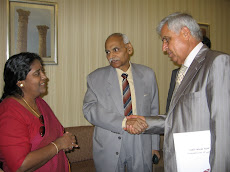
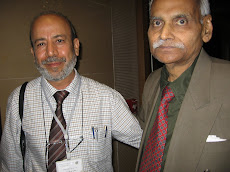
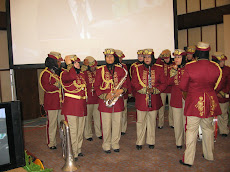
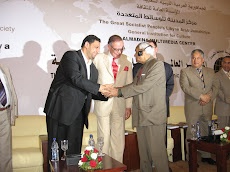

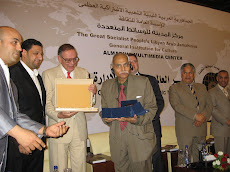


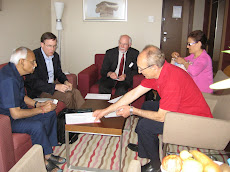

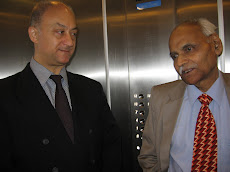
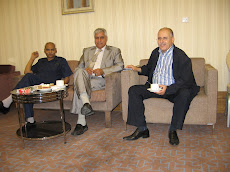
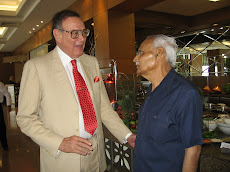











No comments:
Post a Comment